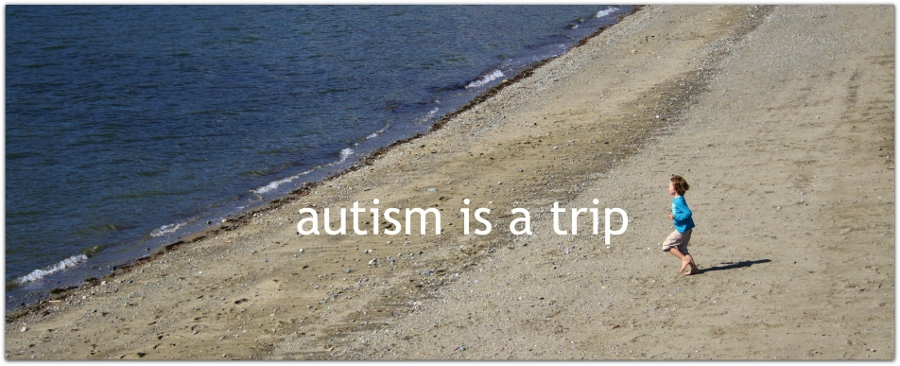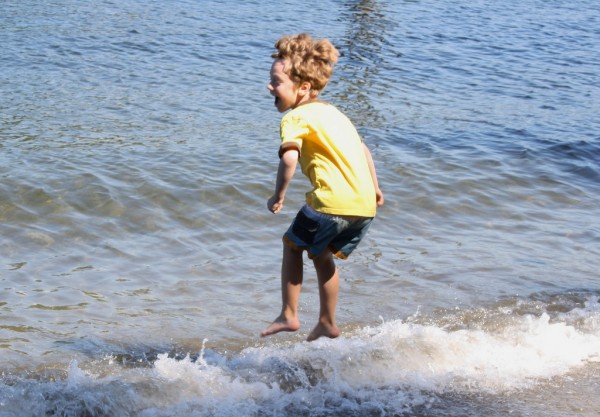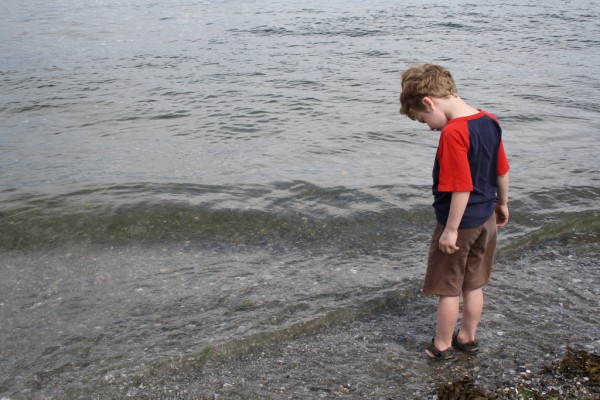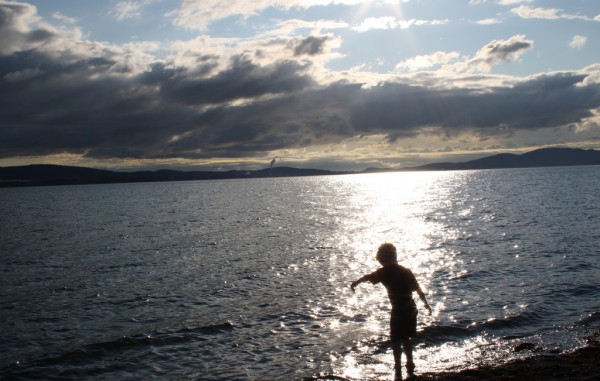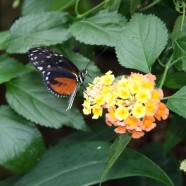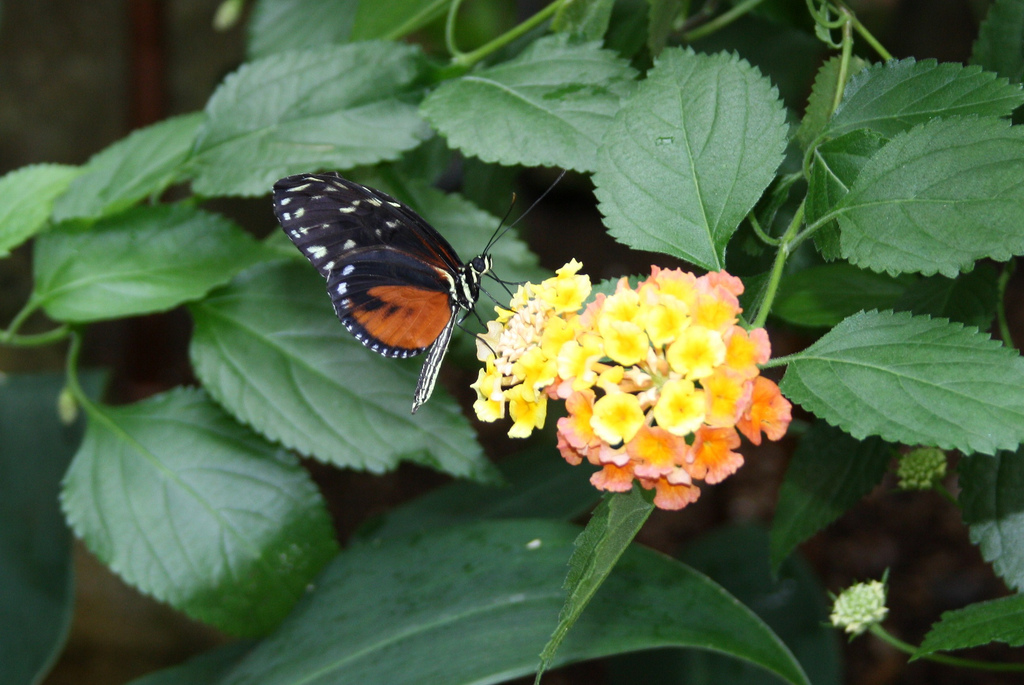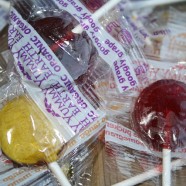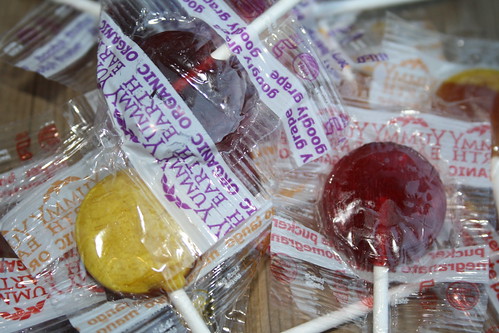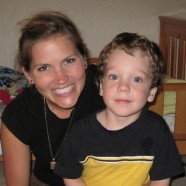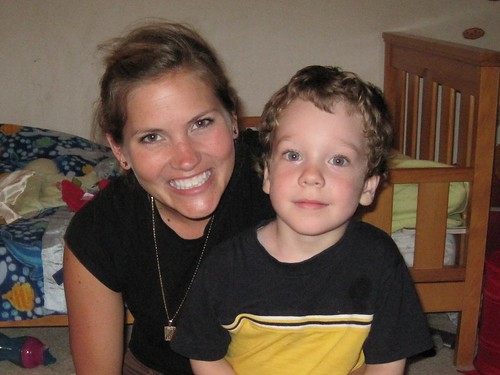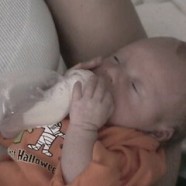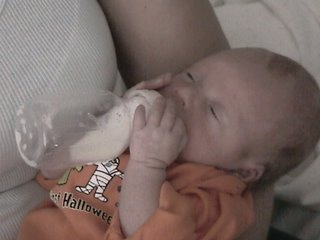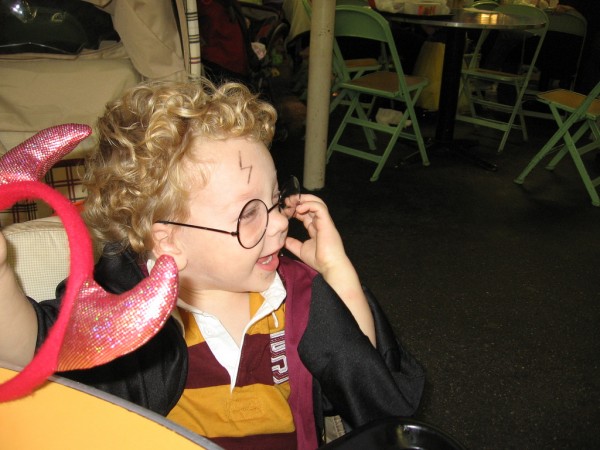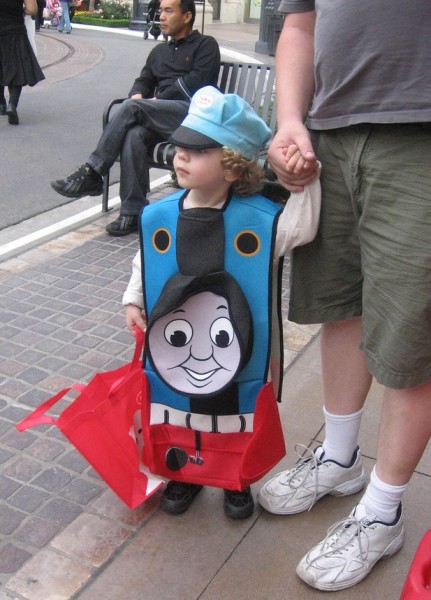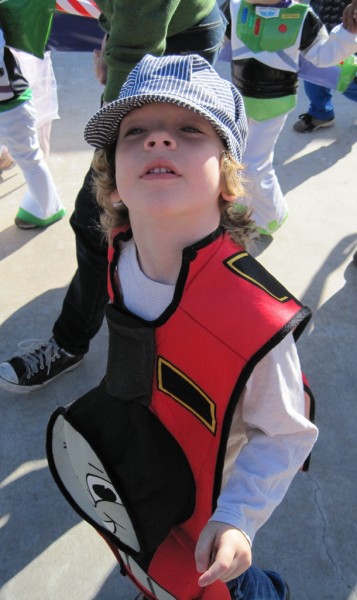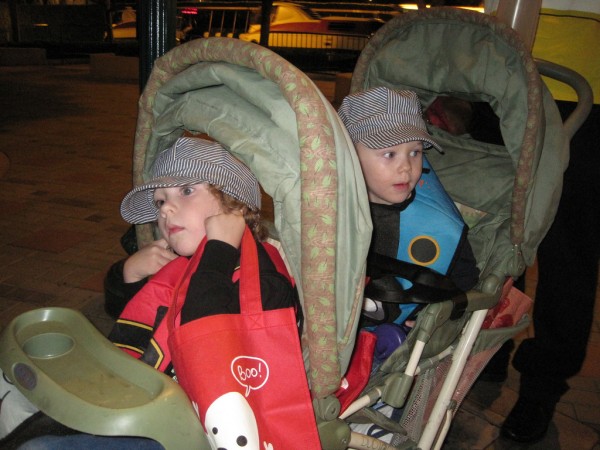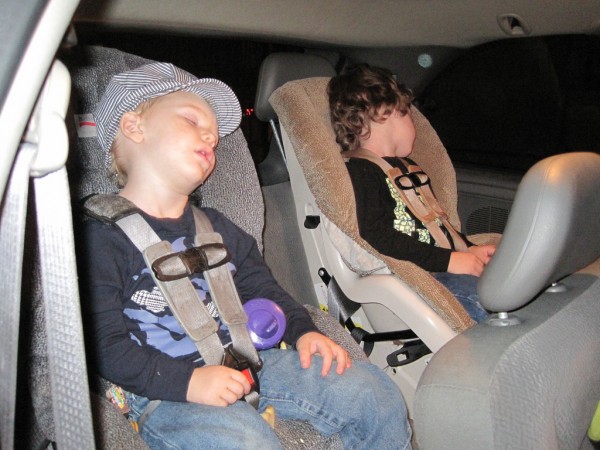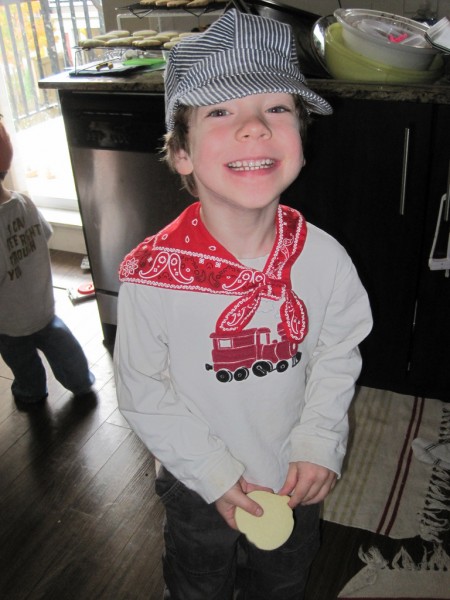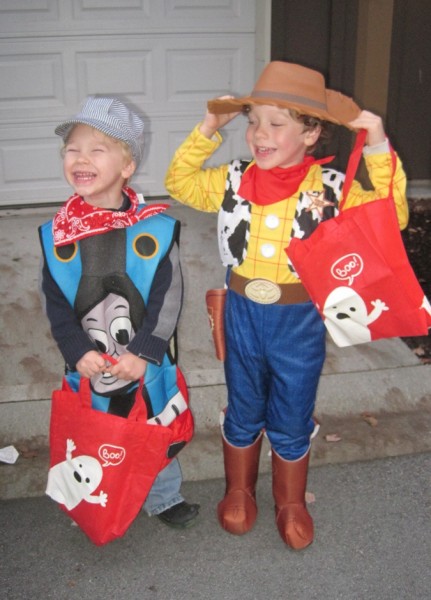If
If my child didn’t have autism, my world would be different.
My children would have furniture in their bedroom and decorations on their walls instead of mattresses on the floor.
My son would nap when he’s tired instead of pacing and jumping and screaming and encouraging his brother to join in.
We could go out and enjoy the world in the evening instead of having to wrangle exhausted children into bed early.
Mealtimes would be spent enjoying each others company instead of constantly reminding my son to sit in his chair and not lay across it or pace around the kitchen.
We could stay with family when we travel instead of always having to stay in a hotel. And I wouldn’t be quite so afraid to fly with my children.
We could have a lazy day at home without worrying if the children have had enough physical activity to make it through the day without a breakdown.
We could go to the movies or a show or a concert or a parade without worrying about the sound and light levels.
We could get a babysitter without worrying about his/her welfare.
We wouldn’t have to explain why we can’t always have friends over or why we can’t always make playdates or why we can’t be super flexible all the time.
We wouldn’t have to always explain how autism affects our entire family, not just my son.
We wouldn’t have to explain that my younger children do not have autism, even though sometimes they act just like their big brother in stressful or exciting situations.
We wouldn’t have to wonder if our two neurotypical children will eventually learn to model their peers and not their brother’s erratic behaviour.
I wouldn’t feel like I’m a warrior, in constant battle for my child’s life and my own sanity.
If my child didn’t have autism, my world would be different.
I might not have learned to be patient and trust that my child will figure things out.
I might not have appreciated the sheer magic in watching a child acquire language, through any means necessary.
I might not have learned all the valuable tools for learning that I’ve shared with my younger children.
I might not have learned the subtle art of negotiation with a child that allows him to flourish and gain control of his life while still guiding him.
I might have missed the necessity of an afternoon downtime.
I would have never met the community of amazing people it took to lift my child up and put and keep him on his path.
I would never have met the community of amazing people it has taken to lift me up and put and keep me on my path.
I might not have had such a compelling reason to rediscover my joy of writing.
I would never have known about the beauty found in the tiniest details of life around me, as pointed out by my son.
I wouldn’t have the unbelievably amazing child who is my oldest son. My beautiful, beautiful, beautiful boy.
Share this: Twitter | StumbleUpon | Facebook | digg | reddit | eMail Read More
"No Kids"? No Thanks.
I read an article today about a “movement” that’s gaining momentum: no kids allowed. No kids in restaurants. Adults-only shopping hours at grocery stores. Children not allowed on airlines, in movie theatres, in certain outdoor parks. The comments below the article all seemed to agree, adding other locations a “no kids allowed” policy might be implemented (Disneyland???). When I finished reading, I sat down and had a good, old-fashioned anxiety attack.
It took me a bit to understand why I was having such a visceral reaction. After all, I don’t want my movie or meal ruined by a screaming child, either. I went over the article and comments in my head, and found the root of my dis-ease. The underlying message is not that adults would like to enjoy a quiet evening once in a while, it’s that children, by their very essence, are annoying and should be either controlled or kept at home.
I admit, I enjoy the “everyone pays the same price policy” at the Arclight Cinema in Los Angeles, where if you want to take your infant to the movies, you pay full price. It makes for a consistently nicer movie-going experience than most theatres. They even have 21+ shows where they sell alcohol for those who want a truly child-free experience (or just want to have some drinks with their movie). I also have no problem with restaurants that do not offer a separate child menu. Having worked in high-end restaurants for years, I know that families who enjoy finer dining experiences with their children know how to order for them without inconveniencing the kitchen (or they learn quickly). We have always taken our children to nice restaurants, and rarely order “kid meals.”
My point is the people behind the “no kids” movement seem to want a child-free life. They don’t want to encounter children anywhere it’s not “acceptable,” and want the kids they do come across to be well-behaved. Many of the comments talked about children throwing tantrums in stores, acting out in restaurants and actually being on airplanes, and the unqualified parents who allow it to happen. In their eyes, any child who isn’t smiling and polite (or asleep) is an annoyance.
I’m certain there will be a backlash against this movement across the mommy blogosphere, and endless debate about where and when children should or should not be allowed. The idea I want discussed, though, and the reason for my anxiety attack, is how autism fits into this Utopian adults-only world.
As I calmed down, I realized I had the same gut-wrenching feeling I get when Jack throws himself on the ground screeching, blocking the entrance to the grocery store (this happens pretty much every time we go there lately, for any number of reasons). It’s the same shaking inside that happens when we go to a restaurant and there’s no seating that will keep my kids contained (we like small chairs and a highchair for Kieran, or a booth where we can sit on the ends and block them in). The same tightening in my chest, clenched jaw and wringing hands I get when I even contemplate air travel.
I don’t worry about being judged. If I cared about what other people thought of me or my children when something unexpected happened I would never leave the house (although the stares at the grocery store or in the park when we try to leave and Jack melts down are pretty penetrating). What I fear is a society that has become so self-involved that it has lost sight of the importance of children, and expects them to act like something they’re not, like adults. I fear for a community that would rather me keep my child behind closed doors than have him and his not-always-stellar behaviour sully their afternoon.
And what of the mother in the grocery store dealing with a screeching child? According to the article’s commenters, I should immediately remove him when he acts out, and come back when he’s better (or better yet, leave him at home). What does that say to my child ? I’ll tell you what – it tells him a whole host of things in one action. By removing my tantruming son he learns that he can leave any situation whenever he wants by screaming. It teaches him that I don’t care about why he’s upset, just that he’s making people uncomfortable, which is more important than his needs. My child understands that his value as a person is less than his elders.
There are also other factors that may be at play – a mother with a screaming child may not have another chance to buy groceries and needs to push through. She may have a child who simply hates being in a shopping cart (yet she cannot allow him to run for various reasons). Or, she may feel the same way I do, that lessons must be learned, and sometimes it’s inconvenient. She may also have a special needs child who simply cannot follow made-up rules.
I have three young children and I understand that they can be loud sometimes. They often run, get worked-up and refuse to settle down. For these reasons and more we don’t take them a lot of places we don’t have to, like restaurants during peak business hours and movies in the evening. The times that we have to go somewhere with them that we wouldn’t ordinarily go, I break out in cold sweats until it’s over. I do not like when I can’t anticipate Jack’s behaviour; forewarned is forearmed. My kids are normally very well-behaved in restaurants, but if they haven’t napped or Jack is in a mood (which the others will follow), it can be a trying experience.
I can’t even think about flying without my stomach turning. We flew a lot with Jack when he was a baby, and have flown several times with two or three children in tow. The last flight was over two years ago, though, and I don’t know when we’ll fly again, even though my family is on the other side of the continent from us. Things have changed in two years, both with the airlines and our family. Each child requires their own seat now, which means we have to split up into two rows (and some unfortunate soul gets to sit with us). I cannot envision a four-hour span of time when any of my boys would sit still in a seat, and a simple airplane seat belt won’t keep them restrained. Delays, overbooking, car rentals, time zone changes and unhappy seatmates all add to my newfound fear of flying.
It’s the thought of getting through security, though, that keeps me up at night. The security line is a nightmare for families already, a juggling act of shoes and folding strollers and backpacks and unrestrained children forced to go through alone. I don’t know when Jack will object to being touched or get spooked and run away or simply throw himself to the ground and object wholly to the process. I can’t be certain neither of my other children will follow suit. It’s enough to keep me home, as much as I miss my family and I know they miss us.
Taking all of this into consideration, it’s amazing parents of special needs children fly at all. Heck, it’s amazing parents fly at all. But you know what? They do, and they pay good money to do it, too. Nobody truly enjoys being cooped up in an airplane for an extended period of time, but a little civility goes a long way. Creating rules against children traveling by air is nothing short of ageism.
The idea that there are people out there who would impose rules on where my children are allowed to be is laughable to me. It’s infuriating and obscene. Yes, there are parents who exercise questionable judgment and take their toddlers to the evening showtimes. There are parents who don’t pay a lot of attention to their kids in busy restaurants. And yes, there are mothers who let their children scream in the grocery store when they really don’t have to. There are also adults who have either forgotten what small children are like or think they were well-behaved at all times as youngsters. There are adults who think money can buy them an insulated life. There are adults who have no empathy, sympathy or common decency.
Parents of special needs children make choices every day about where they can and cannot go, sometimes changing plans in the blink of an eye. They juggle the comfort of their children, themselves, and yes, others. Sometimes their children are angels, and sometimes they are not. Their lives are difficult enough without added, arbitrary restriction.
If we teach our kids now that to be a child is to be annoying, they will pay that forward. If we show them that the needs of an adult to be comfortable circumcedes their need to be understood, we will all pay in the end. If we hide autism behind closed doors, we lose the future.
Share this: Twitter | StumbleUpon | Facebook | digg | reddit | eMail Read More
Why I Don’t Hate Autism
I read a fascinating article recently by K at Floortime Lite Mama, posted on the Hopeful Parents website (both sites you should check out, btw). The article, “Why I don’t hate autism, and neither should you?” piqued my interest.
I read the words K wrote, nodding along as if we were having a conversation. I have had that conversation, in fact, with many people. I love finding a kindred spirit in this crazy community we’ve found ourselves a part of, someone who can laugh at the absurdity of it all. I smiled and nodded, that is, until I reached the bottom. I was wholly unprepared for the anger in the comments section.
Some of the commenters were in agreement and supportive. Some didn’t agree, but understood her point of view. The others, though, were downright angry and offended. Angry that someone dare tell them to not hate the thing that had wrought such havoc on their lives. Offended that there are some who willingly embrace autism as just another facet of reality. Angry and offended that someone dare tell them they need to embrace neurodiversity and not be hurt and sad and disenfranchised and devastated by autism.
There are a lot of families touched by autism who cannot see their way past the anger. They cannot not hate autism. I get that. I was there. There are days I find myself screaming the same thing at the top of my mental lungs – I. Hate. Autism.
But in truth, I don’t.
As you are well aware, my family approaches life with a smile and an eagerness to laugh. We do not hate autism, rather, we are thankful for the perspective it has given us. We are acutely aware of how “lucky” we are in that our child is not profoundly autistic, and we do not face a lot of the same challenges other families face daily. This does not change the fact that we still deal with autism. There is no “good” or “bad” autism, just the same autism, in varying degrees.
There are days I want to pull my hair out. There were weeks on end over the last few months where I thought we were backsliding to the early days, and we might never have a “normal” life. You know, a life that doesn’t involve 4 people always bowing to the will of one. A life where an older brother doesn’t constantly terrorize his two younger brothers every time they dare play with a toy he wants (which is whatever they have at any given moment). A life that doesn’t have me counting down to bedtime from the minute I wake up every morning.
In addition to the trials and tribulations within the confines of my own home, I watch my friends dealing with their own ASD and SPD children, some with more than one in the home. Autism doesn’t just affect the family itself, it affects the entire community. It takes a village, you know, and if the village is full of angry, hateful people, what does that tell the children?
Many children with autism do not appear to have outward emotion, but they do, in fact, feel. And they perceive how the people around them feel, sometimes more intensely than we give them credit for. Do we want to raise these individuals to hate the very thing that defines them, or to accept it and learn to adapt?
I’ve said it before, and I’ll say it again: autism is infuriating, inconvenient, aggravating and exhausting. Autism is also incurable. That leaves us with a very important decision. Do we live a life of anger and resentment, or do we accept that we have a more complicated life than expected and deal with it?
I am in no way suggesting that a life with autism is a bowl of cherries for either the individual or their family. What I am suggesting is we have a choice in how we deal with it. And we have a responsibility to the individual with autism in our lives to set an example.
So what will you choose? I want Jack to laugh and be happy, and to see his autism as just another thing to deal with, like my terrible eyesight or his daddy’s left-handedness. No, they’re not the same thing, but I can’t see any harm in Jack owning who he is and going with it.
Having a child with autism means having autism in the family. You don’t have to love it, but life might be a little easier if you didn’t hate it.
Share this: Twitter | StumbleUpon | Facebook | digg | reddit | eMail Read MoreA Naturally Colorful Life
We are a dye-free family. Yes, I am one of “those” moms. I’m the mom who won’t let her kid have Kool-Aid at the party. I’m the mom who has to take every snack innocently offered at the playground and inspect it with a scientific microscope first. I’m the mom who will not, under any circumstances, make an exception “just this once.”
Before you write me off as obnoxious and over-protective, let me tell you my story. At the tender age of three, I became, as my father likes to tell it, a “nightmare.” According to my mother, I was given some candy by a well-meaning relative and had somewhat of a reaction. And by reaction, I mean a full-on personality change. I was what they used to call “hyper.” The change was so marked that my mother took me to the doctor, and I was diagnosed with “hyperkinesis,” the early 1970’s version of ADHD.
I don’t know exactly how it all went down, but someone had the wherewithal to realize it was the colors in the candy (red, specifically) that were causing my erratic behavior. My mother tended toward the natural side of things, and she discovered the work of Dr. Benjamin Feingold, and his book, The Feingold Diet. Dr. Feingold hypothesized that artificial colors, artificial flavors and additives (like BHA, BHT and salicylates) were major contributors to childhood hyperactivity. At the age of six, my mother attempted to put me on The Feingold Diet.
I was all for it, in theory. I loved the attention, the “special” foods and the prizes she dangled in front of me as inspiration to stay on the diet for any length of time. Looking back, I think we were doomed to fail. By the time she implemented the diet in force I was already addicted to candy. To be fair, there was no way the “healthy-tasting” alternatives were ever going to win over Fruity Pebbles and grape Bubble Yum. There was not the bountiful array of alternatives we have today, and seriously, carob is no substitute for chocolate. I was a lost cause, and my childhood was often a haze of erratic, candy-fueled behaviors.
I have known my entire life that consuming artificial ingredients is “bad” for me, but it took puberty to make me quit them completely. Sure, candy and sodas made me moody and unpredictable, but that was mostly inconvenient for those around me, so I didn’t really care. I realize now I was no more able to control my chemical consumption any more than an addict can control their need for drugs. I needed a massive intervention, and thankfully, one came naturally. Around the age of seventeen my beloved red sodas and purple gum and rainbow-hued candies turned on me.
As a child and young teen, the chemicals jacked me up. They wired me for sound. I couldn’t really focus or function to the best of my abilities, but I wasn’t calling the shots. I remember vividly the day six little gumballs came in the mail, promising a wonderful new world without sugar. Those gumballs were my first taste of aspartame, marketed at the time as Nutrasweet. The reaction I had to aspartame was essentially everything I’d experienced before, turned up to eleven.
Then, something happened. I’m guessing my hormones changed, and so did my body’s reaction to the junk I’d been feeding it. Instead of feeling awesome when I had a Hawaiian Punch at school in the morning, I felt ill. My tongue felt thick and burned, I felt lightheaded and sick to my stomach. I had to make a massive change in the way I was eating, and I had to do it quickly.
Fast forward to today. I have lead a mostly all-natural life for the last 24 years. In that time I’ve watched our society’s attitude toward food change drastically. In the beginning if I wanted something other than fruit juice or water to drink, my only choice was Snapple. All-natural hard candies were next to impossible to find, except the awful ginger candy at the health food store (all apologies to those who love ginger candy – I just can’t do it). Nowadays you can find a natural alternative to almost anything you’re craving, from soda to candy to snack cakes.
I’ve watched the food supply get overrun by chemicals, and not just colors, flavors and additives. Now we have, in addition to aspartame, a whole host of imitation sweeteners, MSG, growth hormones in meat and dairy products, and High Fructose Corn Syrup (HFCs*) pushing natural ingredients to the wayside. To make matters worse, most HFCs (at least in the USA) is made from genetically-modified (GMO) corn (there may not be a lot of research around GMO food yet, but I can’t see how messing with the DNA code of a plant to produce a sort of Frankenfood can be good in the long run). Think I’m wrong? Take a walk through your neighborhood conventional grocery store and pick something off the shelf. Anything. I’ll bet you it contains HFCs. Bread. Deli turkey. Tomato sauce. Cereal. It’s pretty hard to regulate your sugar intake when there are added sugars in every single item in your shopping cart. The purpose of HFCs is supposedly to substitute for sugar, but in reality it is used most often in addition to other sugars, and the more sugar you eat, the more you want to eat. Pretty handy for the manufacturers.
The biggest secret about artificial colors especially is the ingredients used to make them. Food dyes approved for mass usage commonly contain trace amounts of lead, azo and tartrazine (coal tar derivatives), aluminum, and many other ingredients that are potential carcinogens and asthmatic triggers.
Sure, in the last few years “all-natural” has become the fashionable thing to do. However, unless you shop at Whole Foods or Trader Joe’s or Wild Oats or Sevananda or another store that only carries “real” natural and/or organic foods, you can’t be certain you’re actually getting a natural product. Case in point – on a recent trip to Costco, I looked at Dempster’s Ancient Grains bread, chock full of whole grains and certain to be the real deal. Nope. Every Dempster’s product contains HFCs. In fact, it was only in the last few years that Oro brands, one of the staples of mass-produced “natural” breads, eliminated HFCs from their ingredient lists. My point is don’t assume anything, and read everything.
I have spent my life reading labels. I read every single label on every single food item I buy. I used to spend hours grocery shopping. I am now a one-woman resource on food ingredients, a crown I am proud to wear.
I have always said that when I had children, they would not eat artificial foods at all. Everyone has things they will and won’t do as parents, and much of it is fantasy (how many of us swore *we* wouldn’t be the ones with the screaming child in the restaurant?) Well, I kind of knew better on that front, but I had visions of my own. Call me crazy, but I just don’t think children need blue ketchup or green yogurt or cereal with candy in it, and I was determined to keep those things out of our home.
The fantasy I have for my children is that they will know the difference between junk and real food. It’s a long shot, but I’ve been working really hard for the last five years to make it happen. We are fortunate that the first years of our young family were spent in Southern California, where eating naturally is the norm, and Whole Foods and Trader Joe’s are on every corner. We easily created habits for a lifetime that can persist even when we’re in less “food friendly” regions.
I was determined to create an all-natural family long before I knew my first born son had autism. Before I knew how critical my choice would actually be for his well-being. I gave him the best shot at “normalcy” without even knowing it (and that’s just my opinion – I mean no offense to anyone who has fed their child conventional foods).
There has been a lot of research lately about artificial ingredients and how they affect behavior in children, but I can tell you I’ve witnessed it firsthand. I know exactly when Jack has had something “bad.” He had a half of a red cookie in preschool once and he tantrumed the whole afternoon after throwing a Sybil-like fit. On Halloween this year he had a cupcake with an orange candy on it and he was unable to sit still or control himself until late that night. I have watched my child go from happy and calm to erratic and moody in the time it takes to chew a Skittle. I can only imagine what I put my parents through eating that stuff on a regular basis.
These ingredients affect my neurotypical children as well. If Kieran or Lennon get their hands on something artificial, you would be hard-pressed not to wonder if they, too, fall somewhere on the spectrum. They become irritable, scattered, and just generally hyper, if you will.
I have endured criticism from many about how I choose to feed my children, but really, is it so bad to insist my kids eat actual food? My children are far from deprived. They have as much candy as the next child (too much), it’s just colored and flavored with fruit juices and vegetables. As a former candy junkie, I can attest to the yumminess of it, too. My children get jell-o, I just make it myself out of gelatin and fruit juice. We make brightly-colored cookies at Christmas and Easter and Halloween and Valentine’s Day. Because I am so vigilant about what they eat 98% of the time, it’s no big deal if they get an Oreo or a HFCs-laden McDonald’s hamburger every once in a while (but, like I said, previously, I make NO exceptions for colors, ever).
I put a bag of “approved” lollipops and other treats in Jack’s school backpack for parties and other treat days so he will always have something, too. I check with birthday party hosts ahead of time to see what kind of cake is being served, and bring cupcakes for my kids if necessary. I carry natural treats and snacks with me all the time “just in case.”
In return for my diligence, my kids are happy, healthy, and beginning to understand the difference between good and bad foods. In the candy aisle the other day, Lennon pointed to a bag and said, “that’s colors, and we don’t eat that.” On Halloween they were patient as I weeded through all of their loot to take out the “yucky” stuff (I always buy extra “good” stuff ahead of time to supplement what I’ve removed, and we use the offending candies to decorate our gingerbread houses at Christmas). I don’t see them pining for anything they think is “forbidden” to them. That’s key in my mind, as children inherently want what they’re not allowed. By explaining that those things are “not food,” they understand. It helps, too, that both myself and my husband eat this way as well. We don’t have “mommy and daddy food” and “kid food.” In our house, it’s just food, and it’s all good.
I know that someday soon my children will have to make these choices for themselves, and I’d be lying if I said it didn’t scare me. I can only hope that by normalizing natural eating and not stigmatizing it, they will make smart decisions. And if they don’t, they can stay in their rooms until they’re fit to be around again.
*in Canada, HFCs is called “glucose-fructose”
************************
**UPDATE 7/1/2012
Recently, in our quest to get Jack properly diagnosed here in Canada, I gave him a bag of Skittles before an assessment. You know, to “bring on some autism” – to ensure he’d display some behaviors worth documenting. Not only would he NOT eat them (“Mom!! I can’t eat these!! They have colors!!”), when I tried to sneak them into a bag of all natural jelly beans, he methodically picked out every offending candy and gave them back to me. I was disappointed, but so, so proud.
He did fine in his assessment, by the way.
Share this: Twitter | StumbleUpon | Facebook | digg | reddit | eMail Read MoreJack Talk
Language has always fascinated me. In high school, when other kids were exploring the worlds of science and history and economics, I fueled my educational passions with linguistics. I love the building blocks of words, the history of words, the sheer beauty of words. In a word, I’m an etymology geek.
My classmate and high school next-door neighbor only helped to pique my interests, as he was – and remains – the biggest word nerd I know. We studied linguistics and French together (while he also studied German), and, in his spare time, he created an entirely new language. He built it from the ground up, complete with nouns, verbs, present- and past-participles, you name it. I still have the lexicon he gave me. Today he is a very successful translator, which surprises me not in the least.
I love seeing a joy of words in others, and this feeling is tenfold with my children. All three are quite verbal, each in his own unique way. My two-year-old was stringing together five-word sentences at the ripe old age of 20 months. Lennon, at almost four, is fascinated by new words and their meanings, and has no problem asking a million questions about them. Jack, as is his wont, takes his love of language to a whole other level.
Jack tends to take on new things, master them, then make them his own. For instance, he received a new train and tracks for Christmas. He played with the set as-is for a day, then started to dismantle and reassemble it. Once he figured out how to put it back together “properly,” he moved on. He spends his afternoons building elaborate tracks all over the living room, incorporating pieces from several different brands, creating entirely new systems.
He does the same thing with his language. I know that children often play with words as they grow and understand the complexities more and more. Twins will go so far as to create their “own” language, shared with no one but each other. Jack, though, is like my neighbor. He has words of his very own, each with individual definitions and rules and tenses. We used to think Jack was just filling gaps in his vocabulary, but instead of decreasing as he’s grown older, his personal lexicon has gotten larger.
Here are a few of the words he uses most often (with definitions, for those who are not fluent in JackSpeak):
Glaver – /glayver/ noun 1) a small measurement of size. “I want just a glaver of cake.”
Blaver – /blayver/ noun and verb 1) something that shoots lots of water, like a water gun. “I loved the blaver at the water park.” 2) “a thing that blave-s,” meaning anything that shoots water. “The fountains at the water park were blaving.” “The blaver sprayed on the fire engine and made it clean.”
Dater – /dayter/ noun 1) “the turner that turns things into a train engine.”
Dieter – /deeter/ verb “when you turn into a train engine.” (I’m not convinced this is the actual definition, but I forgot to write it down initially, and when I asked today that’s what he came up with.)
Droove – /droove/ verb 1) the past-tense of “drive”. “I droove my trains over the tracks.” “Daddy droove me in the van to school.”
Scroove– /skroove/ verb 1) to twist or turn something, like a platform swing on a pole at the playground. “I want to go scroove on the playground.” 2) the past-tense of “screw.” “My swing scrooved really quickly down the pole.”
Cayvla – /cayvlah/ noun 1) a tool for opening and closing things. “I used a cayvla to open the seat on my bike.”
Glove /glohve/ verb. Sadly, I again forgot to write down the definition of this one. All words today in Jack’s world pertained to trains, and I’m pretty sure this isn’t train-related.
These are not one-time-usage words. Each plays an active role in his vocabulary, and he adds new ones every so often. Jack is also becoming multi-lingual, and his new words are taking on both French (via school) and Spanish (via Dora and Diego) characteristics.
I don’t know if Jack will become a great linguist. I don’t even know if, a year from now, he’ll still remember and use these wonderful words. I do know that I will continue to support and encourage his love for language, and hope that someday he’ll be my fellow word geek.
*****
I have to edit this to add that there was definitely a time we never dreamed Jack would be verbal at all, let alone get creative with his words. At the age of two, when he first began receiving his services, he had only four words he used with any frequency. I give all credit to Amanda Chastain with The Speech Network, and the amazing team at Therapy West in Los Angeles for unlocking my child and releasing his genius. To them I say thank you, thank you, thank you. Believe me when I say we think of you every single day.
Early Intervention works. If your child has a speech delay, don’t wait. Our pediatrician told us to “wait it out” until he was two-and-a-half. Instead, we got him assessed, got him into speech therapy, and got him talking. By age two-and-a-half Jack was well on the road to “normal” speech. That may not be the outcome for all children, but you can’t know until you try.
Share this: Twitter | StumbleUpon | Facebook | digg | reddit | eMail Read MoreThe Evolution of Halloween
Through the years October has become our favorite month. We celebrate all month long, rolling Jack’s birthday into Halloween – a 31-day festival of family fun. We decorate cookies, decorate and carve pumpkins, pick out costumes, hit every pumpkin patch within driving distance, and culminate with some trick-or-treating. We’ve taken small steps through the years, working our way up from simple observance to full-on celebration.
Jack’s first Halloween was a pretty low-key affair; we had just brought him back to Los Angeles, a teensy tiny thing. He was only two weeks old, so while his Daddy worked, the two of us just hung out and bonded, him in his (way too big) Halloween onesie.
We didn’t do much for his second Halloween. Jack was still an only child (although Lennon was on his way), and he had just turned one. We took a stroll around the neighborhood but there wasn’t much to see. The area where we lived in Los Angeles was full of singles, and they were more interested in heading out to the festival in West Hollywood than staying home and passing out candy.
For Jack’s third Halloween, we finally got our act together. He and Lennon donned costumes and we all headed over to The Grove outdoor mall in Hollywood for late afternoon toddler trick-or-treating. Neither boy had any idea what we were doing or why, and were honestly more excited about the trip to the Farmer’s Market afterward for dinner.
This is Jack as Harry Potter. The costume is still too big for him, 3 years later. Back then he looked more like a ridiculously adorable Son of Death than a boy wizard.
Jack’s fourth Halloween was a little more productive. Both boys went as Thomas trains (Jack as Thomas, Lennon as James), and at least Jack understood there was candy at stake. Once again we went to The Grove, and, alas, once again the post-trick-or-treating trip to the Farmer’s Market was the highlight of their evening.
We like costumes with some room to grow.
For Jack’s fifth Halloween, our last in Los Angeles, we pulled out all the stops. We celebrated on the 30th, because our new neighborhood in Hollywood was no better for trick-or-treating than the last. Since we weren’t going door-to-door, our little ones wouldn’t know the difference anyway. The day started at Jack’s preschool, where they had a costume parade and trick-or-treating.
Jack in his preschool costume parade. My boys decided to mix things up and swap costumes – Jack was James and Lennon was Thomas. They were happy and I saved money. Winners all around.
After a break to regroup, we took the party to Disney’s California Adventure for Mickey’s Halloween Treat. Every year they transform the park into a Halloween wonderland and have trick-or-treating in the evenings the whole month of October. It was a lot of fun, but kind of overwhelming for the kids, since they were sleepy and had already had a big day.
The boys stayed in the stroller the whole time, but Disney was ready for them. All of the trick-or-treat stops were stroller-friendly, and the candy was flowing (even for Mom, Dad and baby). We took home a serious haul, and could have easily doubled or tripled our loot if we’d stayed longer. (Another plug for Mickey’s Halloween Treat – almost every treat stop offered a kid-friendly alternative of carrot sticks, fruit or crackers. Disney always thinks of everything, and we’d be going back every year if we still lived in Southern California.)
A long, hard day of collecting candy, but somebody had to do it.
This year was different for a lot of reasons. Mainly, we now have three Halloween-aware children. As oblivious as Jack was at 20 months, Kieran is tuned in to all things Halloween. He’s obsessed with pumpkins, adores dressing up in costumes and attaches the descriptor “Halloween” to everything he loves (ie: Halloween star, Halloween sticker, Halloween bicycle).
Furthermore, we live in a new place. I don’t just mean a new country, I mean a new neighborhood and community chock full of young children and holiday-loving people. Jack and Lennon spent the month of October watching our neighbors decorating their homes with increasing fervor, dubbing each new effort a “Halloween house.” Our neighborhood rivaled Disney for decorations, and that’s no joke. These particular Canadians take their spooking seriously.
When the hallowed day arrived after a month-long buildup of trips to the pumpkin patches (real ones, not just gourds in a converted parking lot), decorating cookies and pumpkins and watching every Halloween special broadcast, the boys were ready. As with every Halloween, though, there is the bad that comes with the very, very good. That, of course, is the long wait from breakfast to go time..
It’s hard enough explaining to a toddler and a young child that no, we can not go hit up the neighbors for candy at 10am. Little people are not known for their patience. Enter autism, and the day gets hours and hours longer. We told Jack that trick-or-treating happens after dinner. We probably should have clarified “when it gets dark.” He wanted dinner at noon.
Once we cleared up that misconception, we had to fill the day. We put on our “daytime” costumes and went out for a drive, the Halloween equivalent of the Christmas Eve Christmas light tour so many of us take each year.
Conductor Jack, ready to wait.
We drove around, looked at the glorious Halloween splendour of the neighborhood, and then headed to a playground to blow off some steam with the hopes that the boys would be tired enough for a much-needed nap.
Yeah, that didn’t work.
Dusk finally arrived, and when we would usually be finishing up dinner and starting the bedtime routine, we put on our costumes and headed out the door. Under-slept and amped up, the boys were primed to hit the streets.
Thomas and Sheriff Woody. Ready.
All three boys did a great job. They went up to every door, said “trick or treat” and “thank you,” and required very little assistance from us (although much to Kieran’s chagrin we gave him a lift up and down all the stairs in the interest of expediency). They collected a haul of treats to rival the booty we got last year at Disney, and are still excited to have their two or three daily allotted pieces from the family candy bowl.
At one point in the evening, standing in line with my big boys waiting to get to a particularly popular house, I took a moment to reflect on our Halloween journey. There was once a time when I wasn’t sure Jack would ever play dress-up in an earnest fashion. I couldn’t conceive of him “pretending” to be someone he’s not. Not only did he become Woody this year (to the point of asking each of us, “what’s my name? Woody!”), he was a conductor at school the Friday before, and assumes any number of characters he’s created on a nightly basis while playing with his toys.
I used to doubt we’d be able to do traditional trick-or-treating. Our trips to The Grove were quick and Jack collected his candy with much trepidation. I wasn’t sure he’d be able to handle the stimulation of scores of other children in costume, an onslaught of decorations or talking to strangers house after house after house. Not only did Jack handle every part of the trick-or-treating process, he did it with gusto. He charged up to every doorstep and sang out “trick or treat” with glee. He kept his costume on the entire time and outlasted both of his brothers in the candy collection.
I am fascinated by Jack’s evolution, by my family’s evolution. I love looking back at where we were to see how far we’ve come, and I can only imagine where we’ll be in another two or three years. Who knows, maybe next year Jack will actually want to carve a pumpkin himself instead of making me dig out all of the “guts” while he watches and offers helpful pointers.
As our night wore on, exhaustion claimed my children one by one. First Kieran, then Lennon climbed into the stroller. Jack was the last man standing, but eventually even he threw in the towel. We were in the home stretch, just a few blocks from home. As we walked up the path to a house, Jack stopped and looked at me. He looked at the neighbor, sitting on her stoop with a bowl of candy.
“I’m tired. I want to go home.”
“I understand that honey, we’re on our way home. Let’s just do a few more houses on the way.” I won’t lie, I was reliving my childhood here and walking past perfectly good chocolate is just not done.
“I have enough candy.” Say what? Is this my child?
“Are you sure?”
“Yes.” He looked at the woman with the bowl of candy. “I have enough candy.” She looked at him, and looked at me. I shrugged.
“Jack, this nice lady would like to give you some candy. Do you think you might want to say ‘trick-or-treat’ just one more time since we’re already here?” He thought it over, grinned, and held out his bag.
“Sure! Trick or treat!!”
That’s my boy.
Share this: Twitter | StumbleUpon | Facebook | digg | reddit | eMail Read More